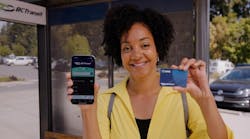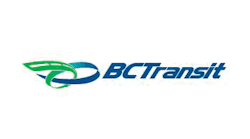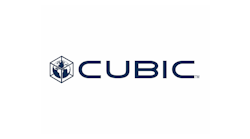BC Transit launches Umo payment system on three transit systems
BC Transit has introduced the Umo electronic fare system on the Sunshine Coast Transit System, Squamish Transit System and Powell River Regional Transit System. Umo is owned and operated by Cubic Transportation Systems. New payment methods include the Umo Mobility app and a reloadable Umo card.
The Umo Mobility app is free in the Apple App and Google Play stores. Once downloaded, riders create an account to purchase and manage their fare products. When ready to travel, riders open their app to display a dynamic QR code that serves as their fare product. As riders board the bus, they present their app’s QR code to a new onboard validator. The Umo app also provides riders with additional tools to help them plan their trip including real-time information and maps.
A Umo card can be picked up for free from a BC Transit Umo vendor. The card is designed for continued use and can be continually topped up with fare products through a vendor, online or through Umo’s customer service call center. When boarding, riders tap their card at the new onboard validator. Riders are recommended to register their card by creating a Umo account online or through the Umo customer service call center using the unique number on the back of their card. Registering a Umo card will safeguard fare products in the event a card is misplaced.
BC Transit notes Umo’s arrival introduces changes and improvements to some of the fare products riders use, with the introduction of the 30-Day Pass and Cash Balance fare products. The 30-Day Pass, replacing the existing Monthly Pass as of Feb. 1, can be activated at any time and provides riders with unlimited trips during a continuous 30-day period. Cash Balance, an alternative to cash and tickets, is a pre-paid dollar amount loaded to the Umo app or reloadable card, which riders draw from as trips are taken. While it is expected most riders will find one of Umo’s new payment methods a more convenient option, cash will continue to be accepted for those who prefer to use it. Riders interested in continuing to use tickets can continue to purchase them via the vendor network at the new price of $20.
Riders paying with a Cash Balance fare product will have their fare capped and automatically converted to a DayPASS after payment on their second trip of the day, meaning that regardless of a rider’s chosen Umo payment method, a rider will never pay more than two times the value of a cash fare for unlimited daily travel in the Sunshine Coast transit system and the Squamish Transit System. A rider will know a DayPASS has been applied to their payment method by referencing a confirmation message on the onboard validator’s digital screen.
Umo’s arrival on the Powell River Regional Transit System simplifies the region’s transfer process. Riders using a Umo payment method no longer need to collect and retain paper transfer slips. Instead, riders can now simply scan or tap their original Umo payment method on their second bus within the 90-minute transfer window and continue to travel without an additional charge. A rider will know their transfer has been applied by referencing a confirmation message on the onboard validator’s digital screen. Riders travelling on multiple buses outside of the transfer window, including to and from Texada Island, are recommended to pre-purchase a DayPASS for their all-day travel with Umo.
At a future date, BC Transit plans to provincially enable onboard payments with debit and credit cards.

Brandon Lewis | Associate Editor
Brandon Lewis is a recent graduate of Kent State University with a bachelor’s degree in journalism. Lewis is a former freelance editorial assistant at Vehicle Service Pros in Endeavor Business Media’s Vehicle Repair Group. Lewis brings his knowledge of web managing, copyediting and SEO practices to Mass Transit Magazine as an associate editor. He is also a co-host of the Infrastructure Technology Podcast.





